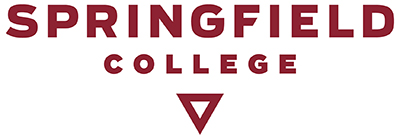Organizational Leadership Learning Outcomes
Goal 1: Students shall demonstrate leadership and team membership skills needed for implementing and coordinating organizational activities and managing change.
- SLO 1: Identify, differentiate and evaluate the stages of team development through the analysis of tasks and behavior (e.g., forming, storming, norming, and performing; the five dysfunctions of a team)
- SLO 2: Classify and apply theoretical frameworks to construct and integrate leadership in multicultural virtual team environments (i.e., infrastructure of information and communication technology for individuals from different cultures and locations to work and learn collaboratively)
- SLO 3: Produce a decision-making matrix of specific criteria based on project requirements (e.g., developed from a case study/scenario employing analytics, concepts, directives and behavior)
Goal 2: Students will demonstrate analytical skills to understand what information is required and how to structure information in order to generate the best possible decisions from clients/consumers/participants, organizational stakeholders, or senior leadership.
- SLO 4: Summarize the role of member participation in decision-making (PDM) form an organizational learning perspective (e.g., community-based nonprofit) utilizing a heuristic framework
- SLO 5: Assess behavioral economics, behavioral insights, and behavioral decision-making, and why they matter to community-based nonprofits
- SLO 6: Apply current forecast trends via program evaluations and strategic planning (e.g., revenue, direct-service programs, staffing, operational and strategic gaps)
Goal 3: Students will exhibit the ability to integrate organizational history/communication and management techniques to aid in community response in a changing environment.
- SLO 7: Define management myths (e.g., lead or manage, robotics, data, strategy)
- SLO 8: Explain organizational communication in terms of a functionalist perspective and structure as a system of pathways through which messages flow (i.e., informal and formal)
- SLO 9: Diagram corporate social responsibility (CSR) and align theoretical frameworks leading to recognition of emotional intelligence in managing organizational hierarchies
Goal 4: Students demonstrate mastery of core business concepts and build key competencies in five areas: (a) business skills for social entrepreneurs; (b) capacity to change human thinking; (c) visionary thinking; (d) problem-solving: social & environmental and their respective crisis and causes; and (e) leadership committed to social change and social justice. This is evidenced in the student’s Graduate Research Capstone, which demonstrates and illustrates Action Research.
- SLO 10: Identify areas where our economy/society have social entrepreneurs work, affect, and contribute to whole systems
- SLO 11: Formulate networking skills (e.g., understand and leverage personal style, strategic targeting of activities, systematically planned networking) to change human thinking and engages visionary thinking
- SLO 12: Evaluate the effect of problem-solving from the lens of operational, personal, and strategy across business functions

